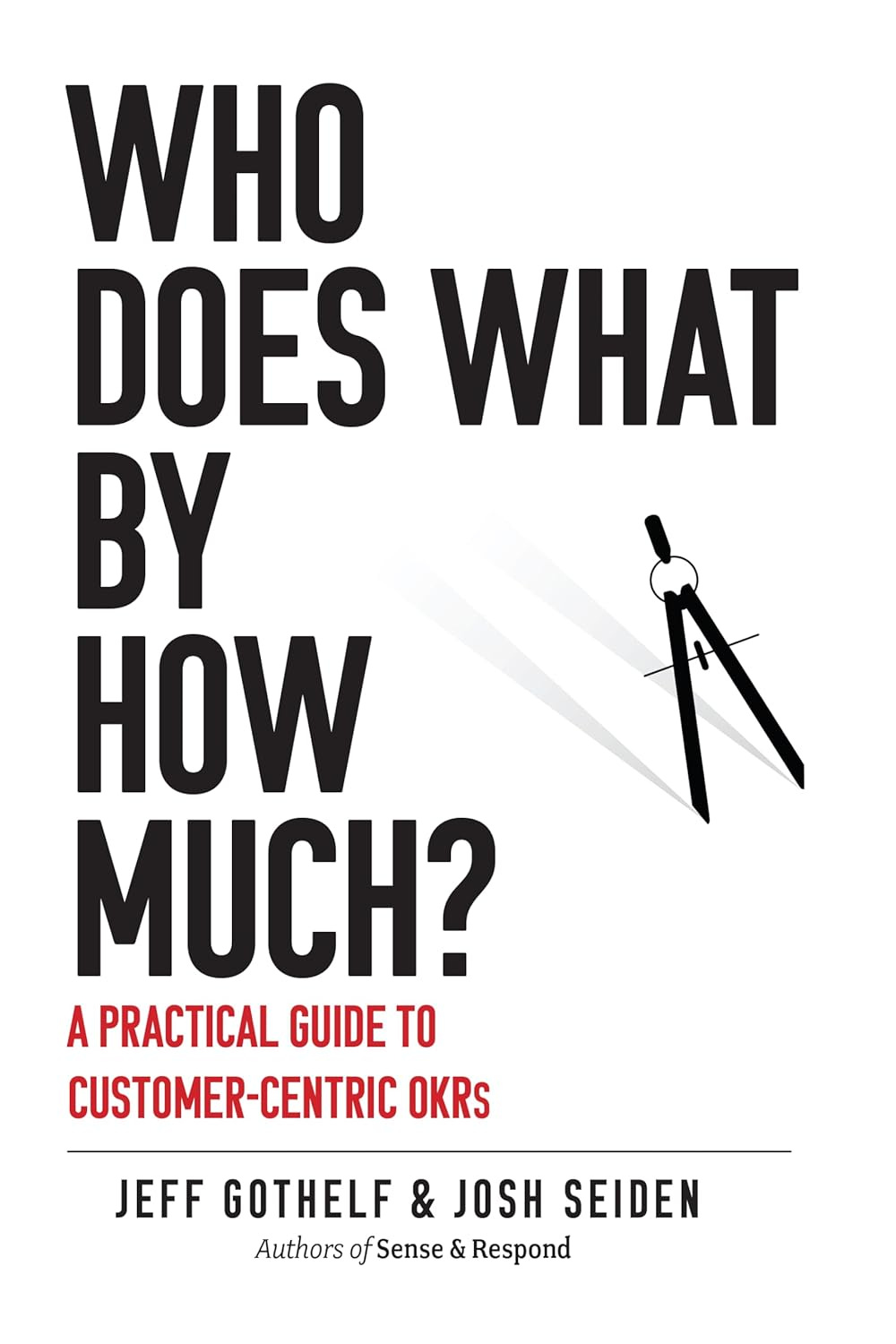I have been a proponent of OKRs for a long, long time. But they can be difficult to implement and maintain, especially if you or your organization are new to them.
However, the principles behind OKRs are not difficult and are useful tools whether you are using them now or want to use OKRs in the future.
And whether you’re looking for a refresher on OKRs, a practical guide for getting started, or just a new perspective, I think you’ll find this book, Who Does What By How Much?, a useful tool.
Jeff Gothelf and Josh Seiden have written several books about product management and UX, so they are no strangers to the tools and processes that make good teams and organizations. And this is another helpful guide, though they’ll be quick to point out it isn’t just for those of us in product management or technology. OKRs are a useful framework, no matter what you’re working on.
Overview
Who Does What By How Much? is, of course, about OKRs. But for those of us who have read many books about OKRs (like Measure What Matters or Radical Focus), this book focuses not just on how to use OKRs, but what to focus them on.
The book emphasizes shifting from output-focused objectives to customer-focused outcomes, which means moving beyond what a team produces to what actual impact it has on customer behaviors. It introduces a practical approach for teams to set goals that align with customer needs and business impact, rather than internal processes or vanity metrics. The book argues we should measure success by how well a product or service changes customer behavior, not how much or how quickly we deliver.
Takeaways
Customer-Centric OKRs
The main message of the book is the need to focus on creating customer-centric OKRs. In fact, the title of the book drives this point home.
“Who?” is your customer. “Does what?” is their behavior. “By how much?” is the measure of change in their behavior.
The whole point of the book is to create OKRs that focus on changing customer behavior by focusing on the customer, what they are doing, and how we’re changing their behavior.
I’ve worked at several companies that have used OKRs, and it is incredibly easy to fall into the trap of creating goals and metrics around improving business or system metrics, as the book points out. But these aren’t the metrics we should be focused on. We need to focus on the customer and their behavior.
How can we create goals and metrics that change user behavior? How can we shift the focus on features delivered to value for the customer? How can we stop talking about timeline and start talking about what users care about?
Typically, roadmaps focus on outputs, dates, and budgets: We’ll do this work. It will be done by this date. It will cost this much. This is the dominant way of planning, despite the fact that not a single person says, “I love Google Maps because it was shipped on time” or “I love my Apple Watch because it was produced on budget.”
Outcomes over Outputs
Along the same lines as focusing on the customer-centric goals, our goals also need to focus on delivering outcomes rather than outputs:
Keep reading with a 7-day free trial
Subscribe to Prodity: Product Thinking to keep reading this post and get 7 days of free access to the full post archives.





